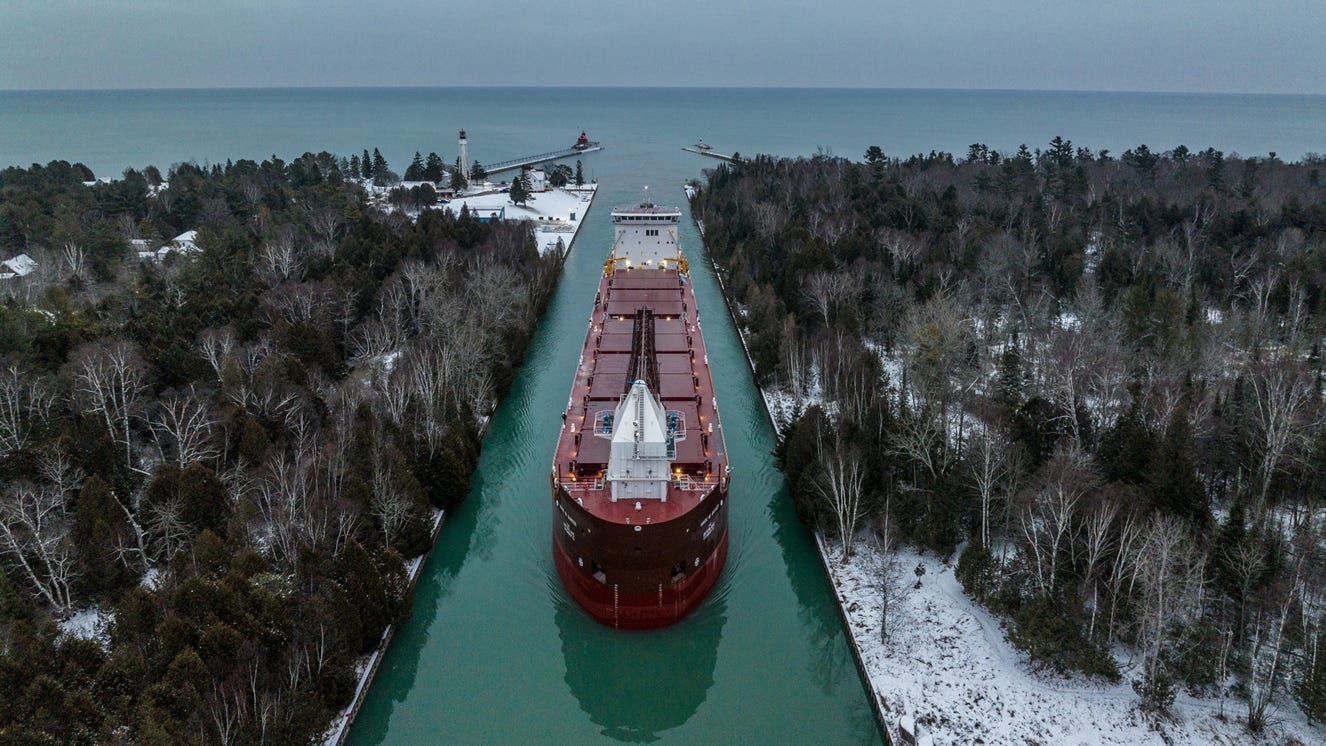




Knowledge

Are the Great Lakes the key to solving America’s emissions conundrum?
A single cargo ship can carry enough goods to replace nearly 3,000 semi-trucks—that's why some are calling for a shipping boom in America's famous lakes.
ByStephen Starr
leading source of carbon emissions, responsible for a whopping 29 percent emissions targets
Nearly four decades had passed since the Great Lakes witnessed that unique ritual: the smashing of a bottle of champagne off the bow of a U.S.-flagged cargo ship.
When it finally happened in October 2021 with the launching of the MV Mark W. Barker, a 639-foot-long freighter, in Sturgeon Bay, Wisconsin, it marked a new dawn.
The first bulk carrier to enter service on the Great Lakes for 37 years, the ship can transport goods ranging from salt to wind turbine blades to shipping containers. Its hull design means it can hold 20 percent more cargo than vessels of a similar size. It’s also the first ship sailing the Great Lakes to meet the U.S. Environmental Protection Agency’s tier 4 emissions standards.
“It’s the most capable, most environmentally friendly asset we have,” says Brendan O’Connor, chief operations officer for the Interlake Steamship Company, which operates the MV Mark W. Barker.
The ship, and others like it, are a critical piece of the climate change puzzle. As the deadlines for meeting the Paris Climate Agreement’s emissions targets draw ever closer—with the goal for emissions to peak before 2025 and decline 43 percent by 2030—one industry is inducing panic: the transportation world.
America’s transportation industry is the country’s leading source of carbon emissions, responsible for a whopping 29 percent. And while privately-owned vehicles make up 58 percent of that, medium- and heavy-duty trucks carrying bulk materials account for 23 percent.
FREE BONUS ISSUE
SUBSCRIBE
Yet one weapon in the battle against emissions may be sitting in plain sight: the Great Lakes.
Linking Chicago, Detroit, Cleveland, Toronto, Buffalo, and other cities that are home to about 32 million people, Great Lakes shipping could play a significant role in helping the U.S. and Canada dramatically reduce their emissions footprints.
Transporting more goods with fewer vehicles
Today, several ports have projects that could help facilitate that change.
The Port of Cleveland on Lake Erie is set for a $32-million infrastructure upgrade. Farther west on Lake Superior, the Port of Duluth-Superior was recently expanded to handle international container freight. One survey of public and private investments found more than $8.4 billion has been committed to developing Great Lakes maritime infrastructure.
Road freight emits up to 100 times the amount of emissions of ships—a single Great Lakes vessel can carry as much bulk material as 2,800 semi-trucks or 700 rail cars. With gas prices raising trucking costs on average and rail strike threats growing in recent years, Great Lakes shipping could serve as a cleaner, more efficient way to transport many of the critical items America’s economy relies on.
Still, challenges abound. The two largest Great Lakes cities—Toronto and Chicago— currently both have comparatively small port infrastructure systems.